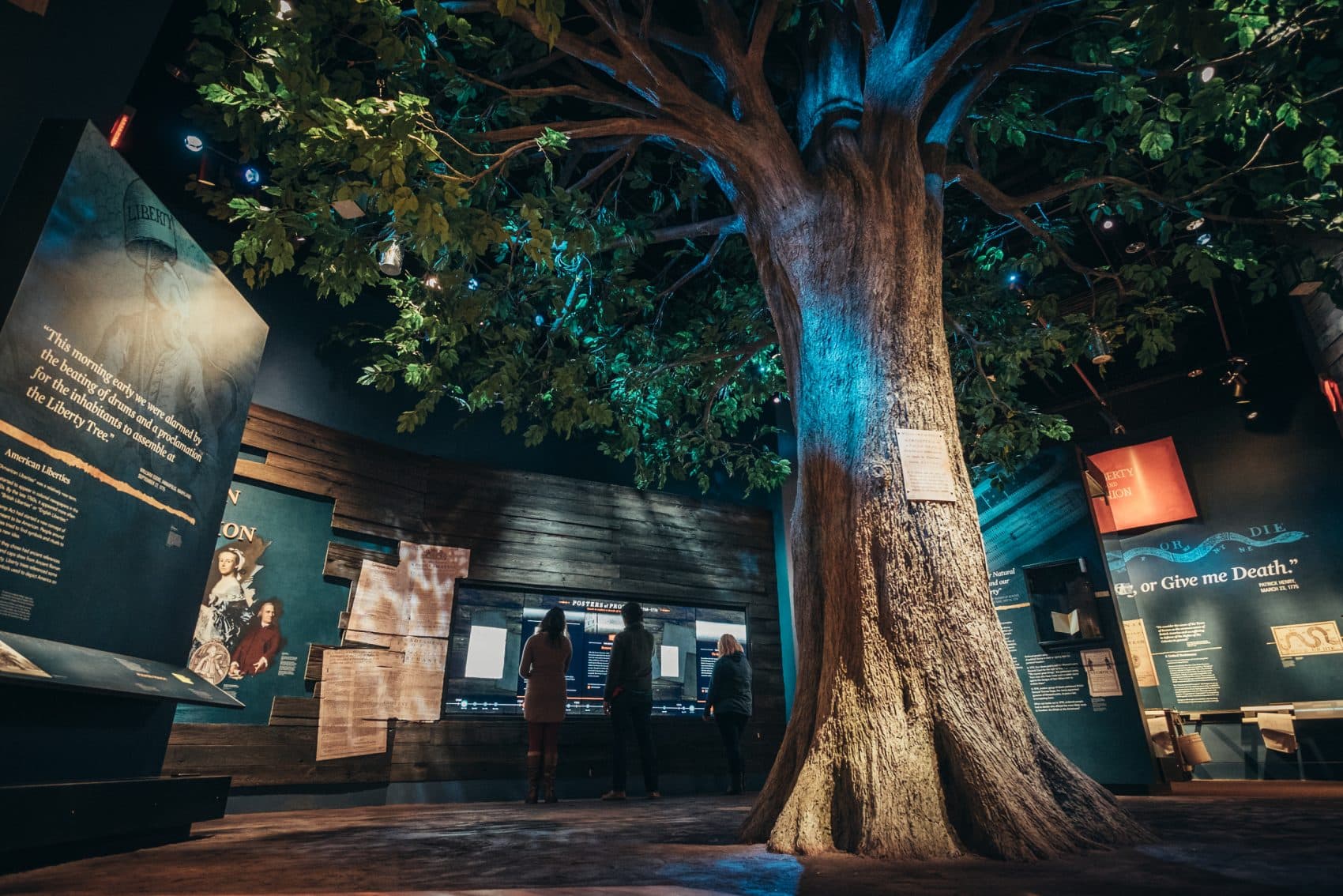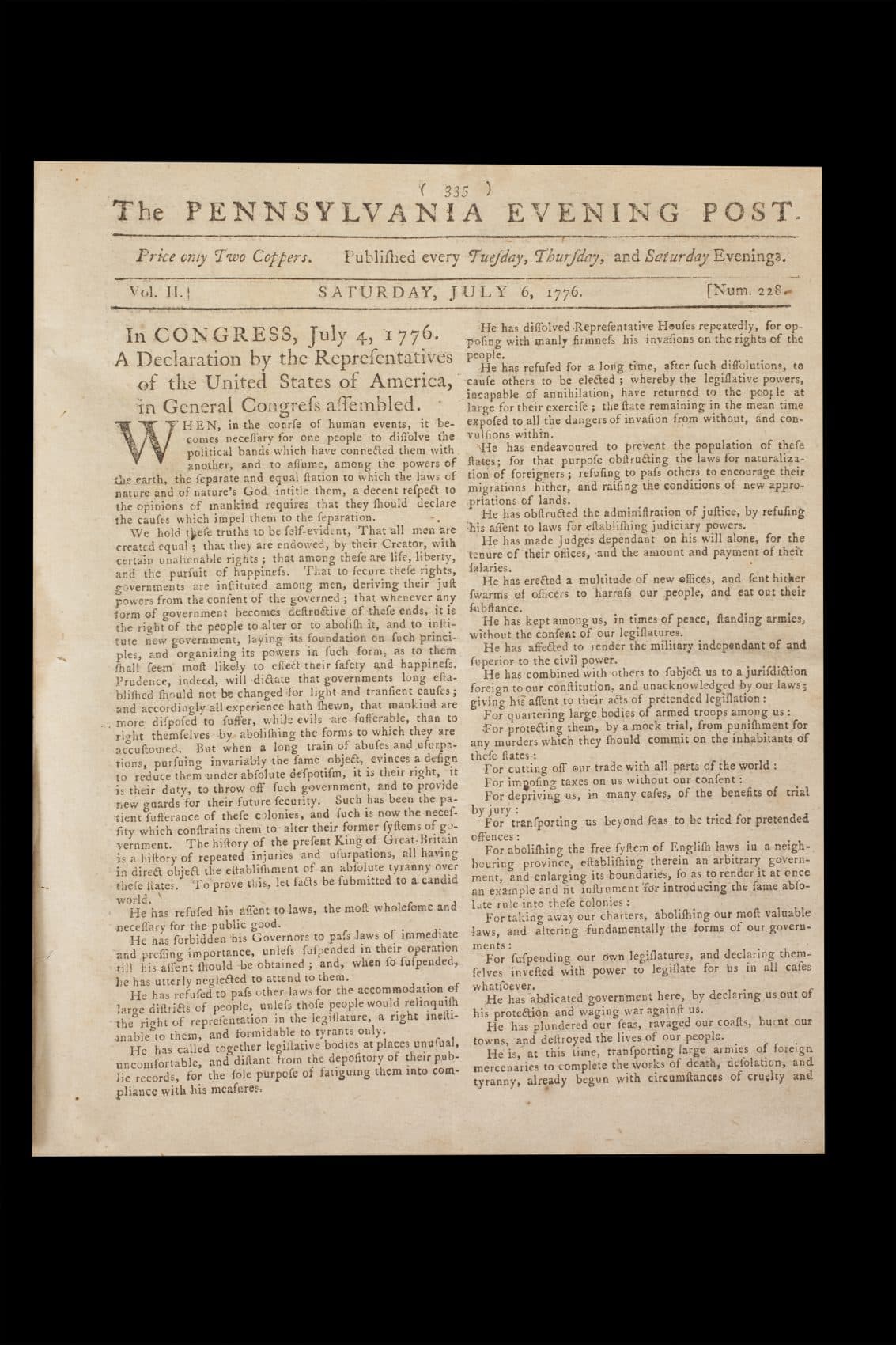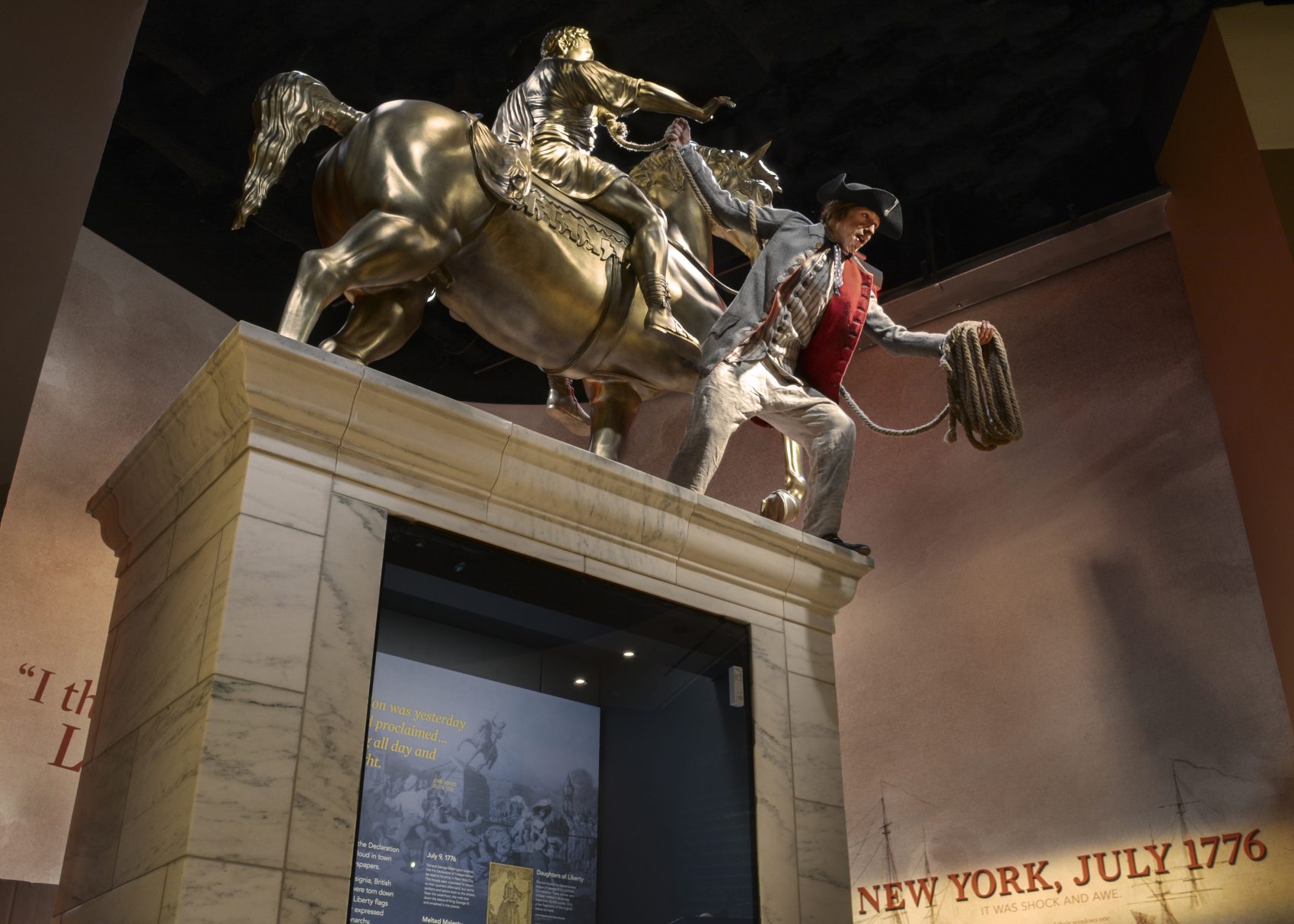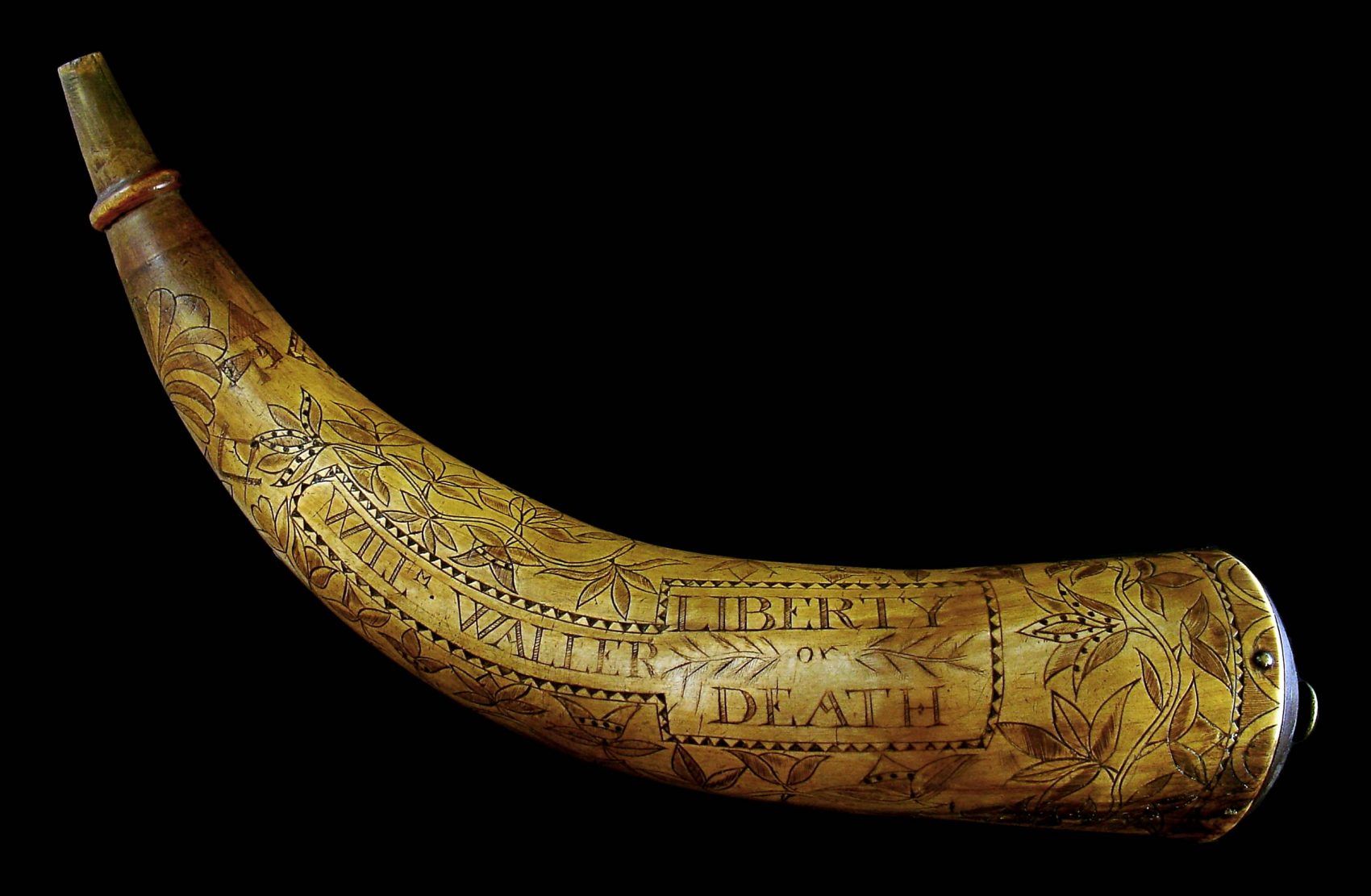Advertisement
New Museum Tells America's Revolutionary Story

A new museum in Philadelphia pays tribute to the bloody revolution that gave birth to the United States more then 200 years ago. The Museum of the American Revolution (@AmRevMuseum) opened its doors on April 19, the anniversary of the "shot heard round the world," the opening salvo of the Revolutionary War.
Here & Now's Alex Ashlock (@aashlock) traveled to Philadelphia to tour the museum and find out more.
Philadelphia is filled with revolutionary history, with iconic sites like Independence Hall and artifacts like the Liberty Bell. But this is the first time that history has been gathered together under one roof.
Hundreds of items are on display at the new Museum of the American Revolution. You can see muskets and powder horns, read letters and diaries. You can even stand under an 18-foot-tall steel replica of Boston's Liberty Tree, a gathering spot for patriots before the revolution where British tax collectors were hung in effigy from the branches.

As battles raged, the Founding Fathers were creating the political framework for the new nation. The Continental Congress adopted the Declaration of Independence on July 4, 1776.

But the contradiction between the fight for liberty and reality of slavery during the revolution is impossible to ignore. And the new museum does not ignore it.
"One of the things that we try to do is point out that the revolution was bigger than the so-called Founding Fathers," museum historian Philip Mead said. "That, this was a revolutionary generation, and there were people pushing the meaning of those words in that second paragraph of the Declaration, that all men are created equal, beyond the boundaries that Jefferson, or Washington, or Adams might've anticipated."

"What we’re trying to do is show people that history is not a settled thing," Mead says. "It’s open for question. It’s up to the visitor to find their answers to those questions along our path.
"I think one of the lessons, perhaps, of the exhibits here, is the continuity of our generation to the first revolutionary generation in that, like them, we're filled with conflict, disagreement, pushing and pulling — that doesn't negate the revolution, that's part of the revolution. And so, rather than looking to them nostalgically for an escape, we need to continue to their struggle."

This article was originally published on July 04, 2017.
This segment aired on July 4, 2017.
